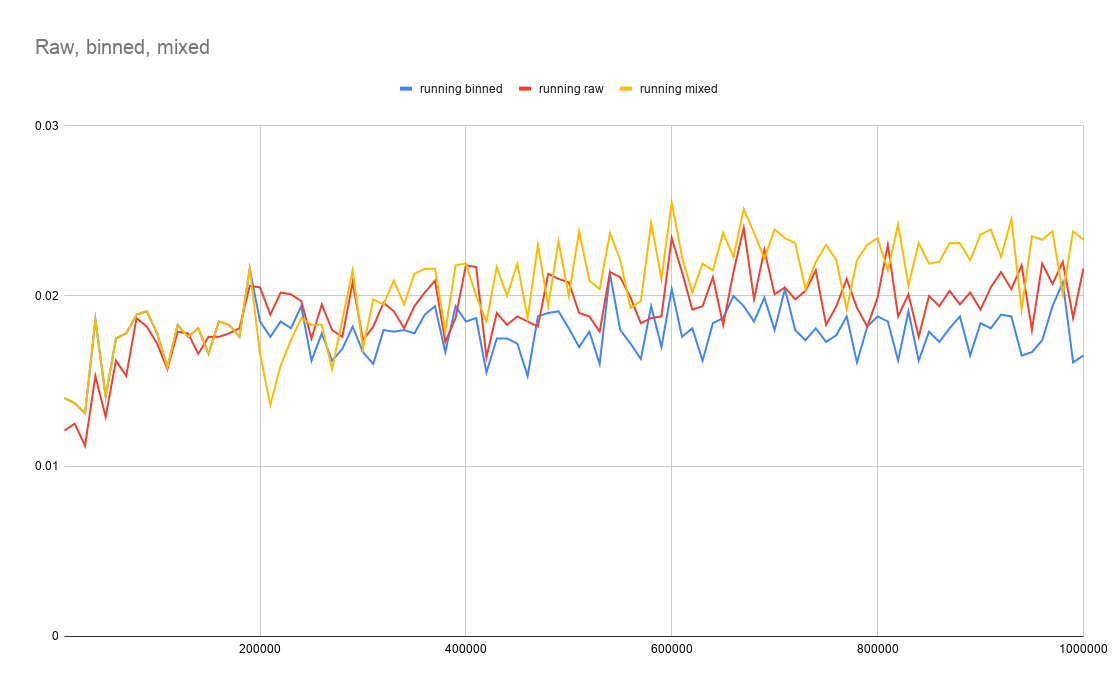Over the months of October and November 2019, Criteo organized the 2019 RecoGym challenge, a challenge where you build an agent that tries to predict the best product to show to a user given his past product views on a website (organic data) and past views & clicks on advertisements (bandit data). The goal is for your agent to have the highest click-through rate on products it recommends.
The Recogym agent in MultinomialNBAgent.py was my last submission as bx to this challenge and ended up
winning the
contest. Below you'll find instructions on how to run this agent as well as a short discussion of the different
parts and features.
It's easiest to test with the sim_test.py script that you can find in the RecoGym repository, the
getting started page shows you how to do that.
The package dependencies for this agent can be found in the requirements.txt file and can for example be installed in
a new virtual environment inside this recogym-agent repository by doing
# Create a new virtual environment in the current directory
python3 -m venv venv
# Activate the virtual environment
source venv/bin/activate
# Install agent dependencies
pip install -r requirements.txtThe core of this agent is a simple Multinomial Naive Bayes classifier implemented with the corresponding scikit-learn class. It doesn't have too many hyperparameters to tune, runs fast and can be retrained easily and quickly.
Earlier versions of this agent used LightGBM (Gradient Boosting) as classifier and performed around the top of the leaderboard halfway through the contest, yet the MultinomialNB started to perform really well once online learning was applied. Its alpha parameter is set using a gridsearch with every online learning batch. (see next paragraph)
There is only limited training data available so it makes sense to let your agent learn as much as possible from the recommendations (and result) it makes, getting smarter as it goes. This is implemented in 2 steps:
- By overloading the
act()method in theTestAgentclass, otherwise we don't have access to the reward (whether our recommendation lead to a click or not) of the last recommendation. - Using this reward data together with the last recommended action to train the agent continuously, this online training
is done in batches and is triggered in the
act()method who together with theadd_batch_to_full,reset_batchesandupdate_datamethods take care of preparing these batches, aggregating them and fully retraining the model.
This online learning implementation was probably the technique that made the biggest difference performance-wise.
The classifier's input is a Kronecker product that combines the features (product view counts a user has seen so far)
together with an action one-hot encoded. The arange_kronecker function builds this Kronecker product very efficiently
for this specific situation.
I also experimented with binning and not binning the features (view counts), binning would result in for example only having 2 possibles values (bins) for a product:
- 0 if the user has not seen this product before
- 1 if the user has seen this product at least once
The LightGBM classifier does something similar out-of-the-box and seemed to get good results with it, that's why I also
implemented it as a pre-processing step for the MultinomialNB classifier in the preprocess method.
After testing with different seeds and different training and test volumes, it seemed that binning was a good solution when there isn't a lot of testing (= online training opportunities) but becomes less interesting once more and more data becomes available (= more testing users).
As the graph above shows, binned features outperform raw (not binned) with less than 200.000 recommendations, afterwards raw data is better. As I'm fully retraining the model quite frequently anyway, I implemented a switch over from binned pre-processing to raw (non pre-processed) data after having done 200.000 recommendations yielding quite a performance boost and made sure I had an agent that could perform well on small and big test sets.
Another but smaller idea that was implemented is that whenever the classifier makes a prediction and multiple actions
have the highest probability, to take one of those actions at random with np.argwhere and not just taking the first
one. This leads to more diverse recommendations in turn leading to better online learning opportunities. A smarter
algorithm could've been used that also checks for which product (with the highest probability) there isn't a lot of
data yet.
Of course, many other ideas and techniques were tried, often not turning into a (clear) increase in performance. Some of these are still visible in the code like epsilon-greedy learning which goes a bit further by actively exploring options, this lead to worse results though and the more conservative option explained under the previous "predictions" paragraph was taken as an alternative.
